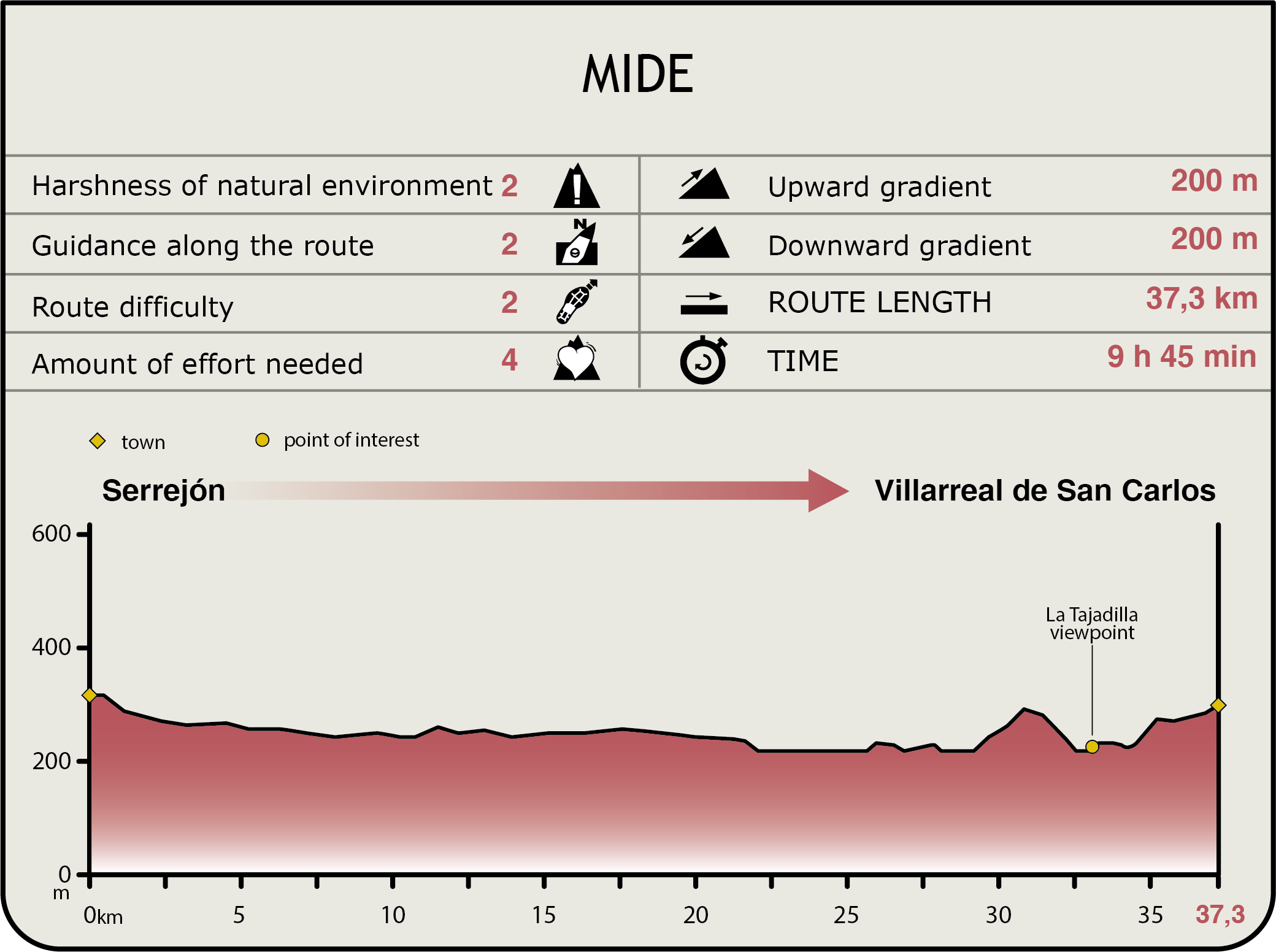Net of Natural
Trails

Stage 34: Serrejón - Villareal de San Carlos
Description
Venturing into Monfragüe National Park
This Stage of the Nature Trail starts at Monfragüe National Park, the first ever protected nature area in Extremadura, and one of the largest and most representative enclaves of Mediterranean forest and scrubland.
The route begins in the centre of Serrejón, and continues along the "Ruta Rosa" to Toril, through Finca de los Calles. The route is dotted with many ponds in which diverse lake-dwelling species can be found, including newts (Salamandridae), and several frog species (Ranidae). These wetlands alternate with holm oak(Quercus ilex) and cork oak (Quercus suber), dehesas, where fighting bulls roam freely, therefore caution should be exercised.
The route crosses two small bridges over creeks, and further on, a properly marked level crossing, after which it arrives at Toril. The town is home to the shrine of Saint Blaise and the "Portico de Monfragüe" Dehesa Interpretation Centre, which provides information on the characteristics, factors and environment that have defined the Park. A recreational area is located on the outskirts, where one can rest.
The route then crosses a level crossing and a bridge, similar to those described above. Immediately after, the Trail ventures through several pig and sheep farms. The Stage reaches a road and continues along this route for several kilometres through the National Park. La Fresnera Reservoir and La Herguijuela farmstead appear before one reaches the River Tiétar.
The route meanders along the River Tiétar until it merges with the River Tagus near Villarreal de San Carlos. The two rivers create the local environment that is rich in wildlife and biodiversity, and which can be easily seen from the viewpoints that dot this stretch of river. The route to crosses over the river via the Torrejón-Tiétar Dam and, further on, reaches "Tajadilla" Viewpoint, with a rest area where one can enjoy the flight of Egyptian Vultures (Gyps fulvus) in the shade.
At the next fork, the route turns left, drifting away from the road, onto a narrow path that leads to Villarreal de San Carlos. This stretch coincides with the "Ruta Amarilla", which is one of the routes available within Monfragüe National Park, where one can visit the fountains of Tres Caños and Alisar. This route lasts just over an hour, with breath-taking views of the river and its surroundings.
The Stage ends at Villarreal de San Carlos, a town located on the Cañada Real, the old drover's trail used to cross through province of Extremadura, which retains its spirit of hospitality, providing the traveller many services and well-equipped facilities.
Sites of interest
Profile

Highlights
Further information
Villareal de San Carlos
This small village is the only urban centre within the National Park. The Park's management and administration facilities, well as the visitor's centre are located here.
The town was established in 1767 by King Charles III to accommodate travellers using the Cañada Real Trujillana. This drover's trail, used by farmers and traders, is located in a rugged area that was frequently ravaged by bandits. The provision of shelter and protection to travellers was one of the reasons Villarreal was founded. The shrine of Virgen del Socorro was built in the 18th century at the time the town was founded.
Monfragüe Castle
This castle of Arab origin (2nd c.) is located to the west of Las Corchuelas Mountain Range at an altitude of 465 m. The castle was conquered by the Christians in the late twelfth century, and was handed over to the Order of Calatrava in 1221. It was later transferred to the aristocrats that helped King Alphonse VIII during the Reconquest.
The castle was abandoned after the War of Independence. It is now used as a vantage point for visitors to the Park. Next to the castle is the chapel of Nuestra Señora de Monfragüe, a Byzantine statue carved from black wood.
"El Abuelo" Cork Oak
The "El Abuelo" cork oak, located at La Herguijuela, is notable for its unique biometrics and dimensions (15 m high; trunk circumference at 1.30 m: 7.70 m; crown diameter: 20 m), and, in particular, for its short trunk and rough bark. The tree's age is estimated at around 350-400 years.


